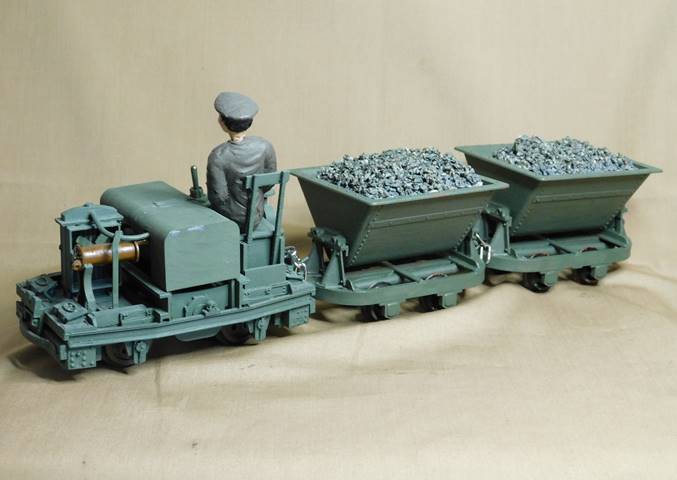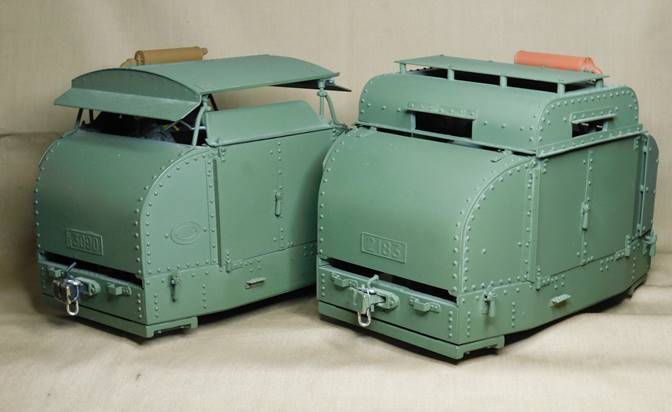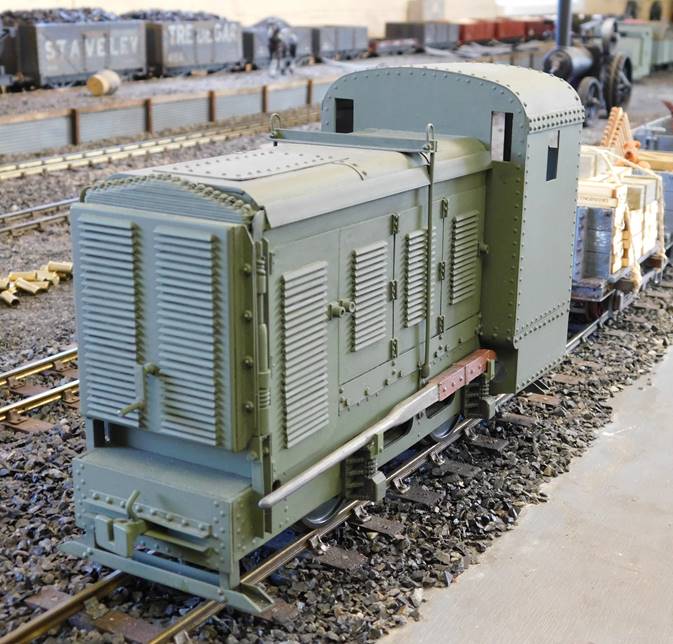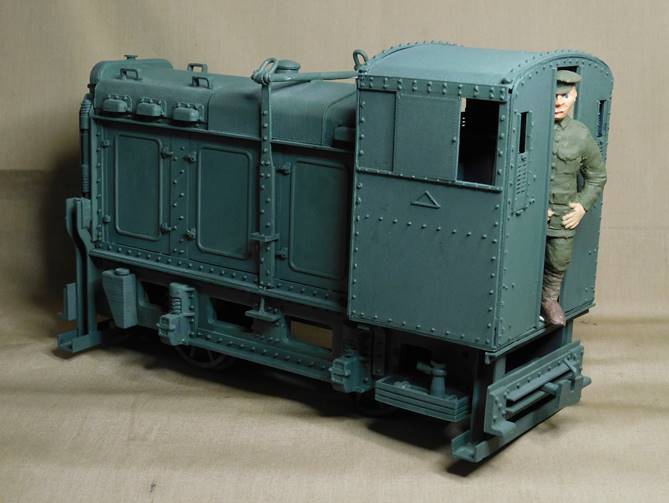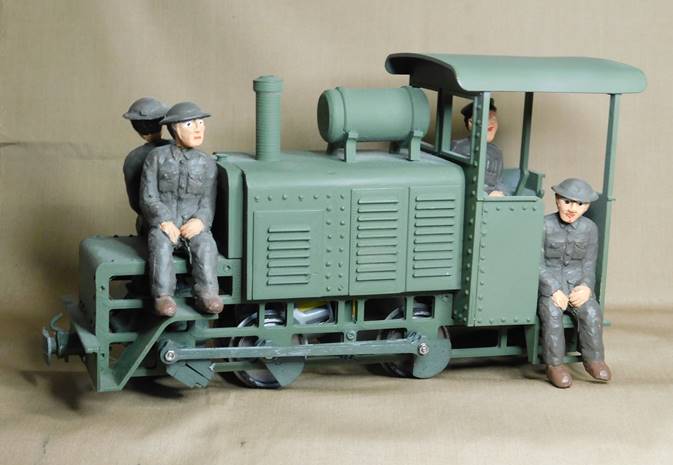In 1909, John Dixon Abbott patented an innovative two-ratio, two-direction gearbox for use in railcars and went on to form the Motor Rail Company with his father John Abbott and brother Tom Dixon Abbott. The Abbotts became aware of the military narrow gauge railways that the Germans had stockpiled and contacted the War Office in 1914 seeking an order for petrol locomotives. However, Lord Kitchener informed them that the war would be one of mobility and narrow gauge trench railways would not be required.
When the War Department Light Railway (WDLR) was eventually established in 1916, there was an obvious need for lightweight petrol locomotives to move men and materials forward to the trenches from the point where it became unsafe for steam locomotives. Motor Rail went on to develop a 20 hp (bent-frame Simplex) locomotive followed by 40hp models (Tin Turtles) with three types of superstructure (open, protected & armoured). The initial order from the WDLR was for only three 20 hp petrol locomotives but, as an indication of the success of the design, 724 had been delivered by the end of the conflict. The heavier 40 hp Tin Turtles were first delivered in 1917 and orders soon amounted to 334 locomotives with the majority of production being the protected type. Both petrol locomotives had Dorman engines built in Stafford and the patent Dixon Abbott gearbox that was built under license by David Brown in Huddersfield. Collectively known to the military as petrol tractors, Motor Rail were not the only supplier to the WDLR.
McEwan Pratt built a 10 hp internal combustion locomotive for very light track but it was not a success. The story goes that the exhaust glowed red hot which provided an easy nightime target for snipers. These petrol locomotives were relegated to duties behind the lines such as forestry work or as workshop shunters.
At the other end of the scale, a 45 hp petrol electric tractor was also sourced for the WDLR. Some 200 of these locomotives were ordered with the original intention of using overhead electrical supply all the way to the trenches! However, the success of the 20 hp petrol locomotives, and a reality check of conditions on the Western Front, soon put paid to the idea of building catenary wires onto the battlefield. The locomotives were designed to run individually or back-to-back in pairs, plus each unit could act as a mobile electrical generator using a built-in junction box.
The order for these petrol electric locomotives was divided equally between British Westinghouse in Manchester and Dick Kerr in Preston. Although both companies produced very similar designs to meet the specification, a number of differences did exist. Both versions had an armoured cab to protect the occupants from small arms fire but the Dick Kerr locomotives were heavier and, externally, had louvered panels as opposed to plain panels on the Westinghouse.
Even though they were not ordered by them, the WDLR received 132 vehicles built by the LNWR Crewe Works under a Motor Transport requisition. The story is that the daughter of the LNWR Chief Mechanical Engineer was told by a serving officer of the lack of adequate motive power on the lightweight tramways around the trenches. She prevailed on her father to help and he converted Ford 25 hp motor cars into rail vehicles that became known as
Crewe tractors.
Crewe tractors were designed for road/rail operation, taking about one hour for the conversion. To avoid running in the single reverse gear, the vehicle was equipped with a self-contained turntable. Although tested with loads of up to 5 tons, the Crewe tractors proved of limited use as locomotives and were often relegated to running as staff cars. When Hunslet could not produce the number of steam locomotives that the WDLR required, large quantities were built in the USA by Baldwin and ALCO.
The same situation did not exist with petrol locomotives for the WDLR, as none were sourced outside of the UK. However, Baldwin did build 600 50 hp petrol locomotives (gas mechanicals) for the French Army and 109 (plus 61 of the 35 hp versions) for the US Expeditionary Force on the Western Front. These robust locomotives were well regarded and some found their way into the hands of Commonwealth troops. The French also built a number of petrol locomotives (locotracteurs) but that is another story.
A 20 hp bent-frame Simplex (designed and 3d print by Roy Plum) with WDLR K Wagons
(Binnie kits)
A protected and an armoured 40 hp Tin Turtle built from kits by Swift 16.
Dick Kerr 45 hp petrol electric locomotive designed, 3d printed and built by Robert Bath.
A Westinghouse 45 hp petrol electric locomotive 3d printed by Roy Plum.
A 50 hp Baldwin gas mechanical locomotive built from a kit by PDF Models.
A 3d printed McEwan Pratt 10hp loco.
A 3d printed Crewe Tractor.
